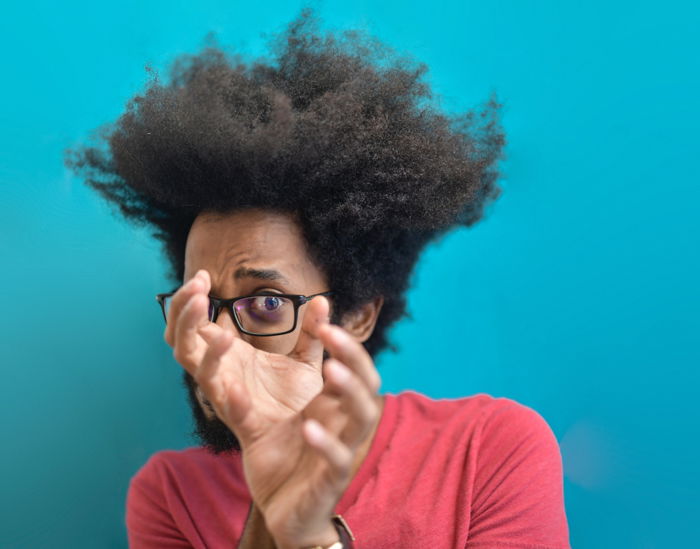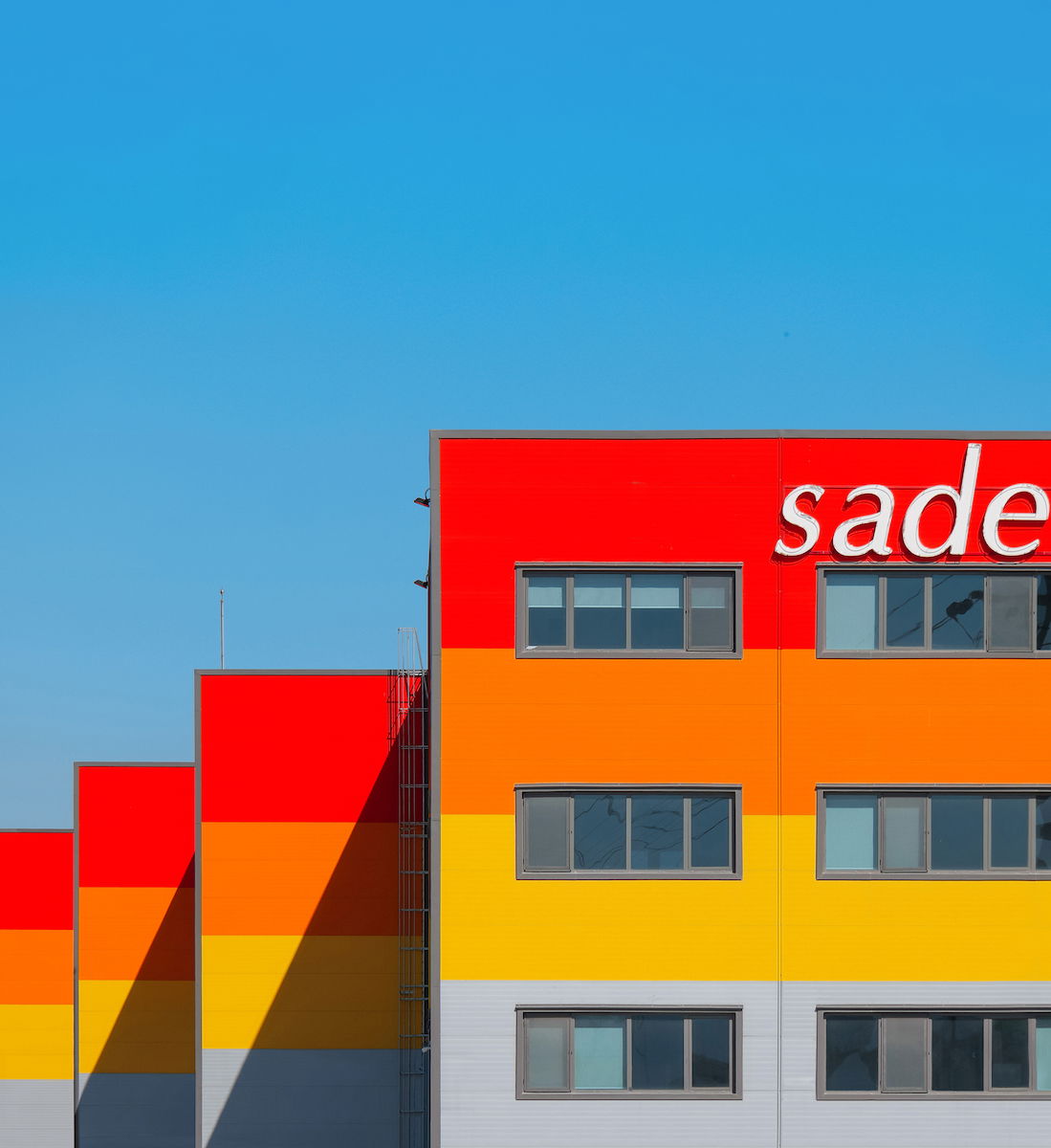“Street photography is one of the most popular forms of photography. It’s one of the most accessible, as you don’t need any specialist equipment or expensive gear. And it’s as simple as leaving your house and taking pictures.
While street photography is open to anyone with a camera, mastering the art takes patience, practice, and skill. Capturing unique shots in urban environments can be challenging, but the satisfaction you get when you nail it makes it all worth it.
If street photography is something you’re interested in, you’ve come to the right place. This article covers everything you need to know before starting with street photography. Even if you have some experience, we’re sure you can still learn a few things from the information in this article.
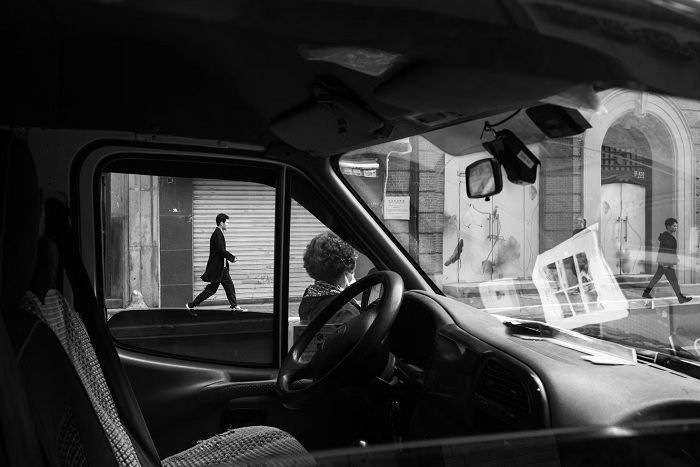
Street photography is the art of capturing candid moments on the street. It’s about creating visually interesting images from the moments casual observers might miss.
Urban streets are environments most of us are familiar with. But the street photographer sees the street in a different way. It isn’t just a random mess of people, lampposts, and concrete. They see patterns, shapes, and other visual curiosities your standard street-goers might miss.
Keeping a low profile, street photographers blend into the background. They don’t want to draw attention to themselves as this will disrupt the candid flow of everyday life. If people are too aware of your presence, they become self-conscious and ill at ease. You can no longer capture natural, candid moments.
Street photography is a versatile genre that overlaps with other types of photography. Street images can include elements of cityscape, architecture, and portraiture. Urban settings can be used for fashion or editorial photography. And you can also use advanced techniques like long-exposure or time-lapse to bring a new edge to your street photography.
Now that we have a conceptual understanding of street photography, it’s time to look at the specifics. The rest of the article looks at the best camera settings, the best cameras, and even the best editing techniques for street shooters. Let’s dive in, and remember to click the links to find more information.
Street photography is a diverse genre that incorporates many different styles. Some photographers take an unobtrusive approach, blending into the background to capture candid moments. Others are more intrusive, actively engaging with their subjects to create vibrant, energetic images.
Raw-style street photography exposes the dark reality of urban life, while street portraits focus on the people who inhabit these spaces. Fine art street photography finds beauty in the urban landscape through precise composition and framing.
Geometric street photography showcases the patterns and shapes found in city streets, while smart street photography adds a touch of humor and satire. Abstract street photography simplifies the urban environment into pure forms, and modern street photography captures the fleeting moments that define our current era.
To learn more about the various types of street photography, check out our in-depth article.
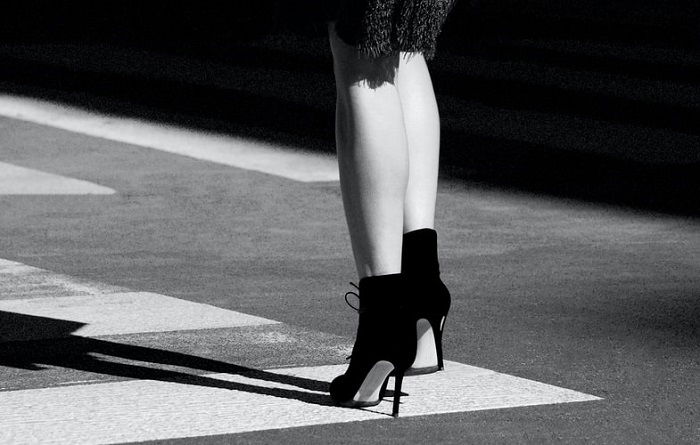
Street photography is easy to get started with. Just step out with your camera and start snapping in Auto mode. But once you’ve built up some confidence shooting in the street, you’ll have to start using manual camera settings. This might seem daunting to beginners, but the results will be much more rewarding.
You can also start experimenting with composition, looking for new angles and vantage points for unique perspectives. Switching from color to black and white is another creative option for spicing up your street shots. You can even set yourself up with street photography projects to push your creativity.
We’ll go into more detail on all these aspects of street photography in the following sections. Click the links to keep learning.
The best street photography camera settings help you capture unique moments quickly. During the day, use a wide aperture like f/4 to blur distracting backgrounds and isolate your subject. Be careful not to overexpose in bright sunlight.
For sharp photos with more context, use a small aperture like f/11 or f/16. Pre-focus on an area and wait for people to walk into the scene. This works well if you’re shooting from the hip or you don’t want to keep the camera by your face for long periods.
At night, use a fast lens with a large aperture and higher ISO. Keep your shutter speed above 1/60th of a second. Look for artificial light sources like street lamps for additional illumination and contrast.
Learn more in our full guide on street photography camera settings.
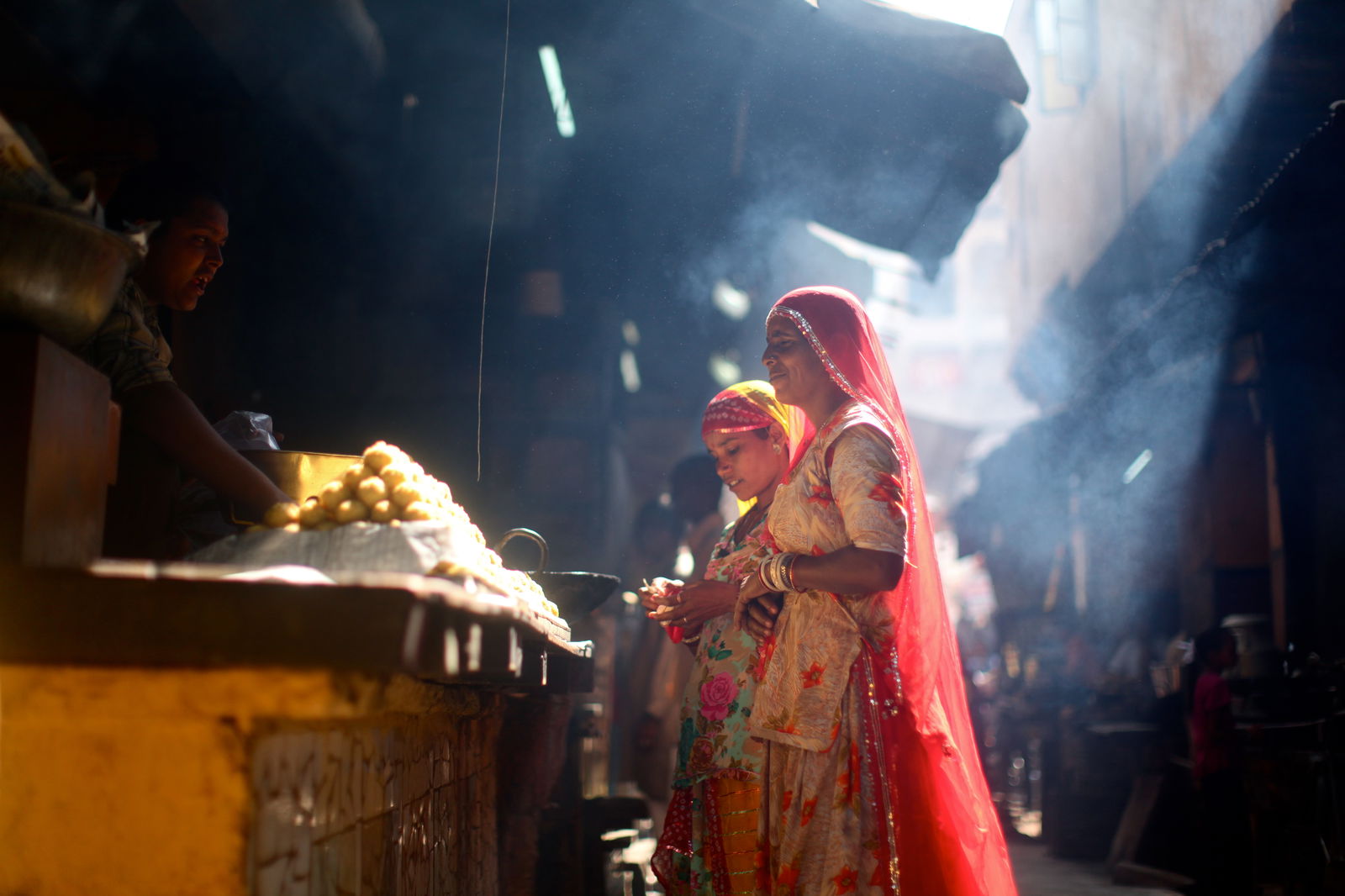
Smartphone street photography is a fun and accessible way to capture the world around you. Apps like Camera+ give you more control over your phone’s camera, with features like exposure lock, focus lock, and shutter release. These let you take better photos in tricky lighting situations.
When composing your shots, look for interesting backgrounds like textured walls or doorways that frame your subject. Getting close to your subject is key, and your phone’s small size makes it easy to do this discreetly.
Choosing a theme for your street photography can help you build a compelling body of work. Ideas include focusing on a specific city, market, or even just light and shadow.
Our full article on smartphone street photography has everything you need to know. Click the link to learn more.
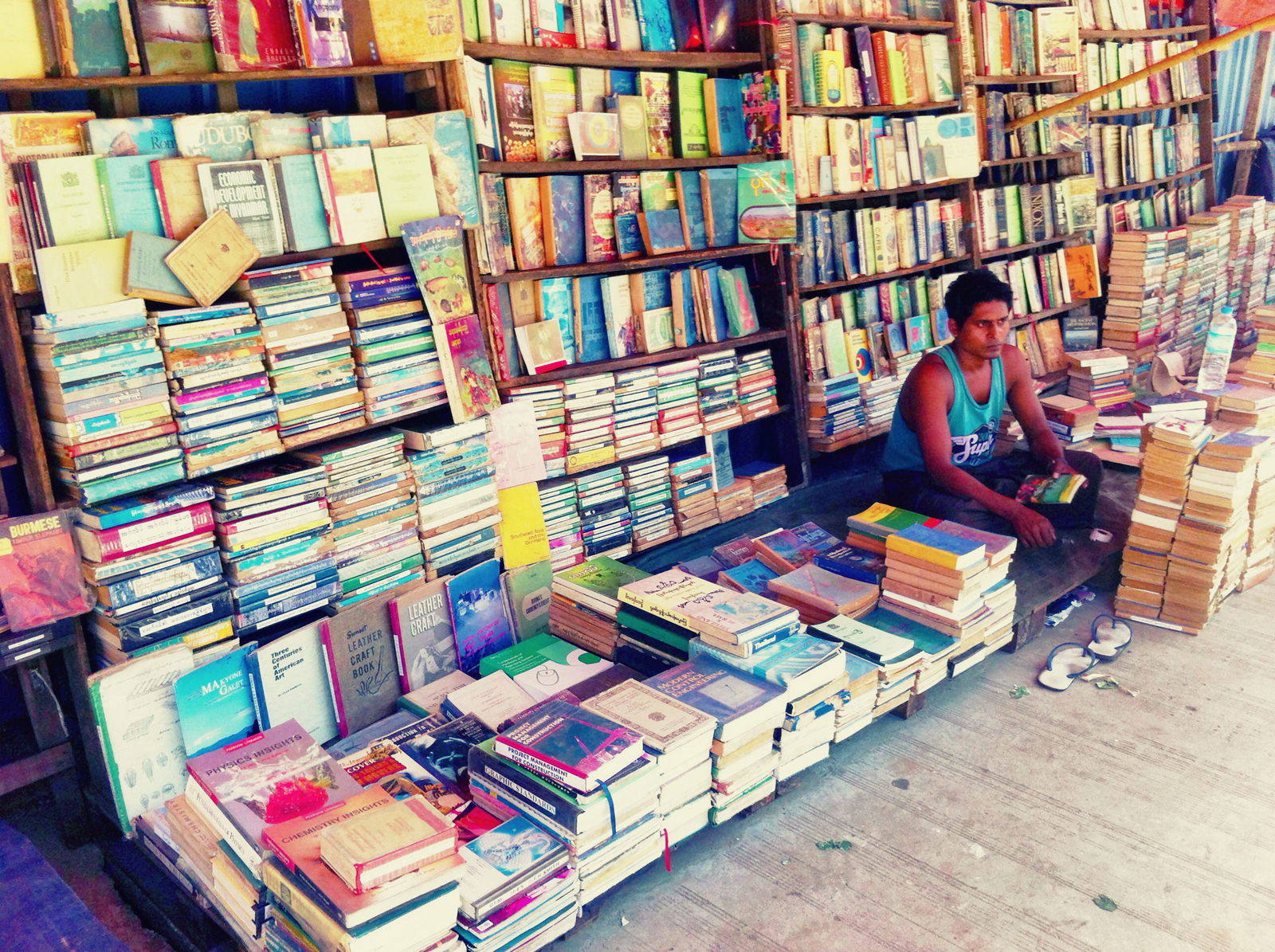
Lighting is a key aspect of street photography, and finding interesting ways to use available light can yield exciting results.
On grey and rainy days, black-and-white photography is your friend. It echos the somber nature of the weather and emphasizes lines, shadows, and textures.
In bright sunshine, use a lens hood and ND filter to reduce the light hitting the camera sensor. Focus on details and small scenes where you control the light, like under shop awnings or in doorways. Adjust shadows, highlights, and tones in post-production.
At night, use a tripod and slow shutter speed to capture artificial light without camera shake. Include contrast between lights and negative space, experiment with white balance, and embrace color. Photograph movement at slow shutter speeds for streaks of light.
Street light photography offers endless creative possibilities in any weather.
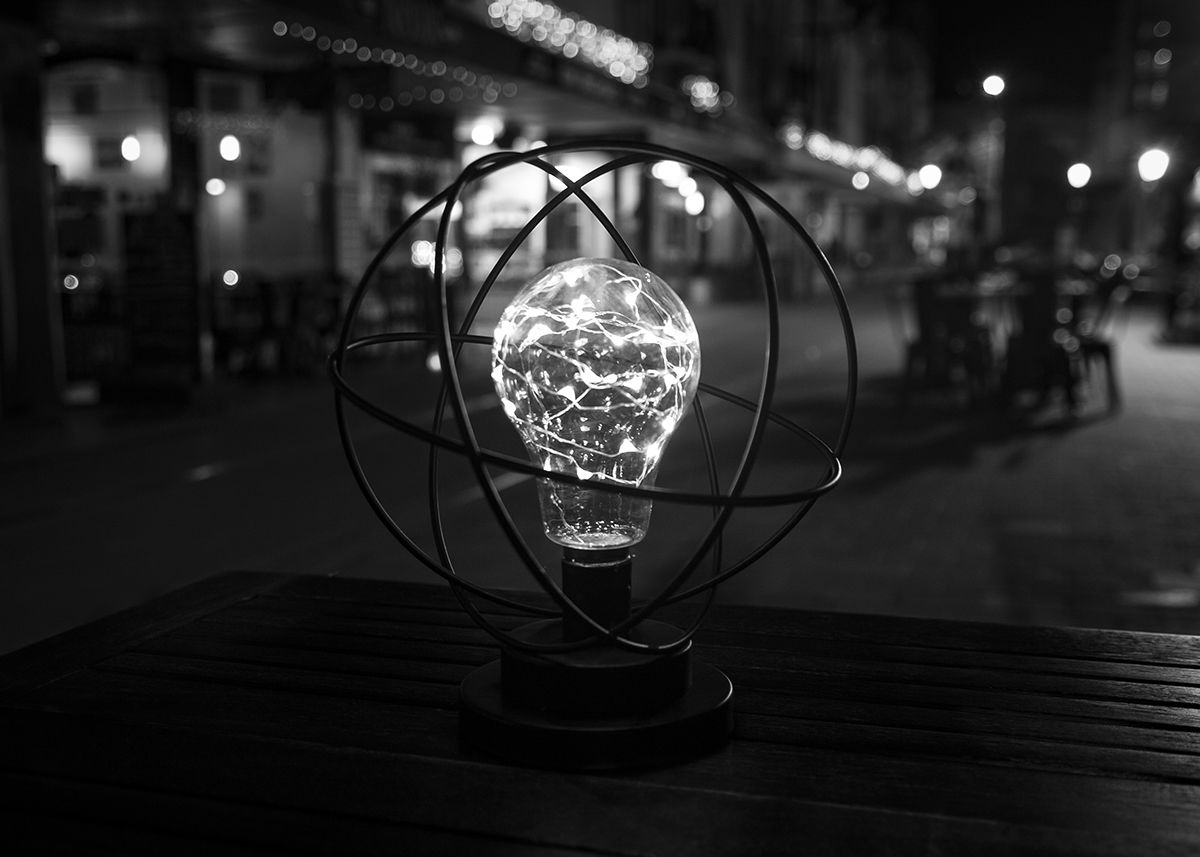
Choose a theme like transportation, markets, or a specific location to give your photos cohesion. Use experimental compositions like photographing half faces, minimal scenes, or isolated body parts. Play with light and shadows to create striking photos with strong contrast.
Photograph silhouettes against bright backgrounds for dramatic images. Look for contrasting styles, like old vs new or complementary colors. Try a 365- or 52-week project where you take street photos every day or week for a year.
Capture fun, lighthearted moments that show the warmth of a genuine smile. Use slower shutter speeds to add dynamic motion blur or panning effects. Be patient but quick to capture decisive moments. Ask permission to take street portraits that show the subject’s personality.
With these ideas, you can create a diverse collection of impactful street photography images. We have even more creative inspiration in our full article on street photography ideas.
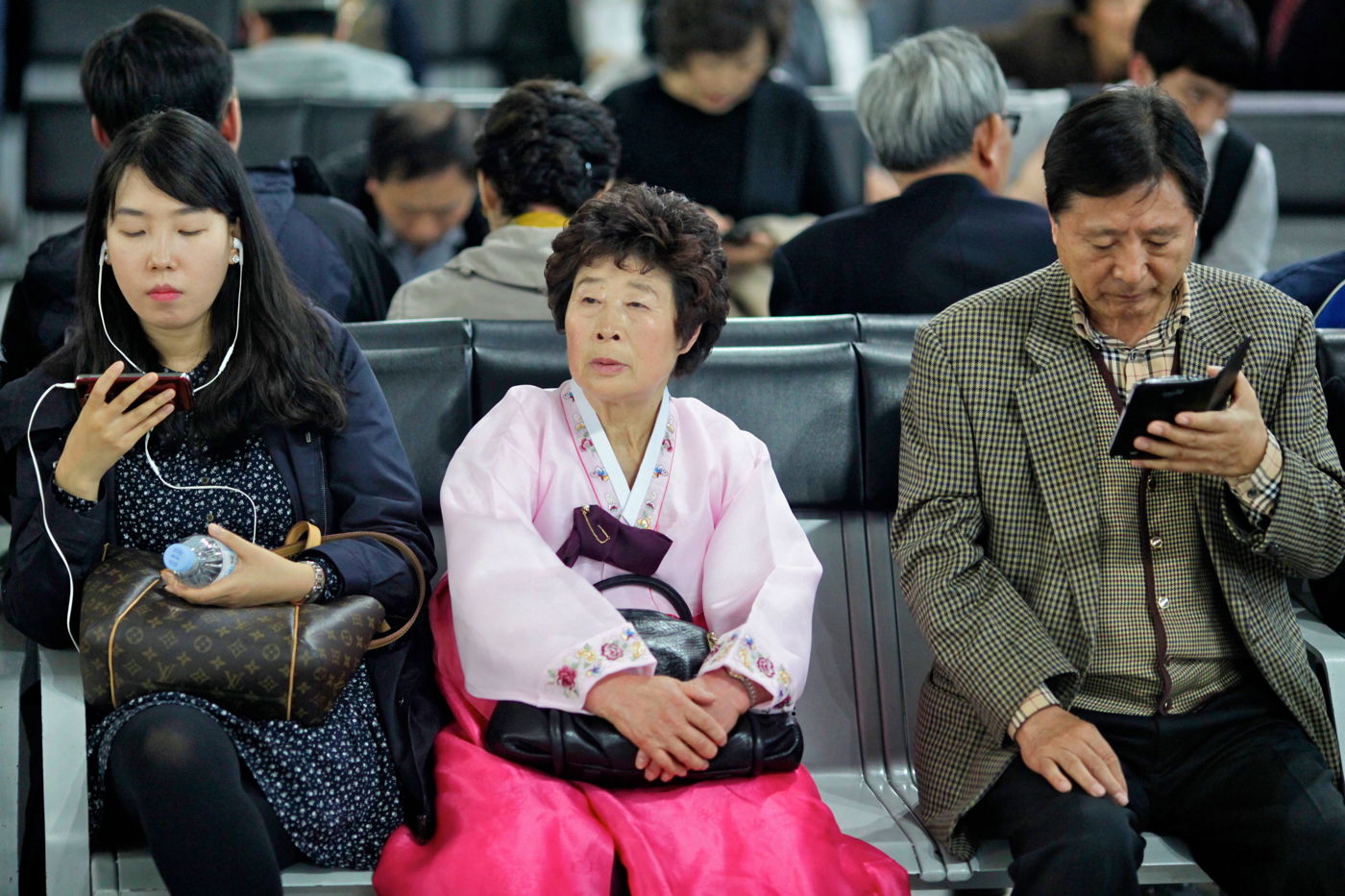
Capturing creative street photos is all about being bold but always remaining friendly. Don’t be afraid to explain what you’re doing if a curious stranger asks. A smile and quick chat can lead to less hostility and suspicion, which makes for better street shots.
Shooting from inside a cafe window provides a unique perspective. Get creative with framing and use the aperture to blur out faces if needed. Stick to one lens, like a 50mm prime, to stay light and challenge yourself to think carefully about composition.
Look for interesting light and learn to shoot “contre-jour” for dramatic, storytelling images. Creative street photography is all about finding those special, unplanned moments that give a glimpse into daily life on the streets.
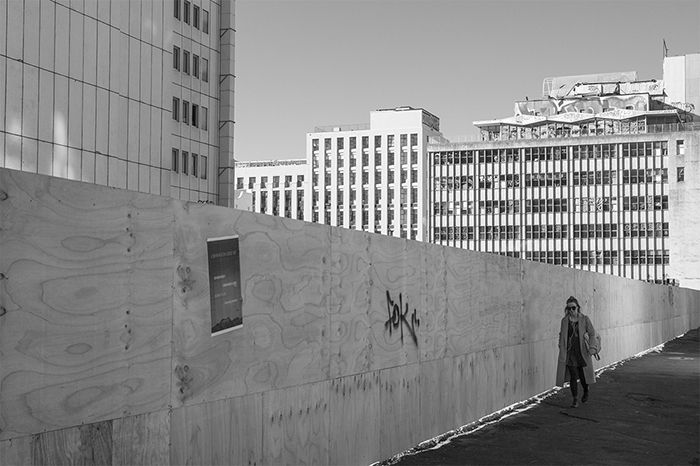
Composition is a key element in creating engaging, eye-catching street photography images. With so many photographers shooting street photos, you need to look for original perspectives.
Use the rule of thirds by mentally dividing your frame into a three by three grid and placing key elements along the lines or at their intersections. Include negative space around your subject to emphasize it and add mystery.
Adjust the depth of field using aperture. A shallow depth of field draws attention to details, while a deep depth of field keeps more of the scene in focus.
Use leading lines like roads, fences, and shadows to guide the viewer’s eye through the frame. Incorporate textures like peeling paint or rough concrete to engage the sense of touch. Look for interesting patterns and repetition in architecture, stairs, or other urban elements.
Frame your subjects using windows, doorways, or other elements to create a photo within a photo. Get creative with perspective by shooting from high, low, or unusual angles. Use bold colors to grab attention, or go black and white for a timeless, serious look that encourages viewers to study the image more closely.
To learn more about street photography composition, read our full article on the topic.
When it comes to street photography, the choice between color and black and white can make a big impact on the final image.
Black-and-white photography can be great for highlighting the emotion and personality of your subjects. It removes the distraction of color and allows the viewer to focus on facial expressions and other visual features.
Black and white is also ideal for emphasizing shapes, lines, and patterns in architecture and structures. Boosting clarity and contrast can make these elements stand out even more.
On the other hand, color is perfect for capturing bright, eye-catching elements like street art, clothing, and signage. Nature provides beautiful color contrasts in urban settings, with autumn leaves and summer flowers adding warmth and interest.
Click this link if you want to learn more about black-and-white street photography.
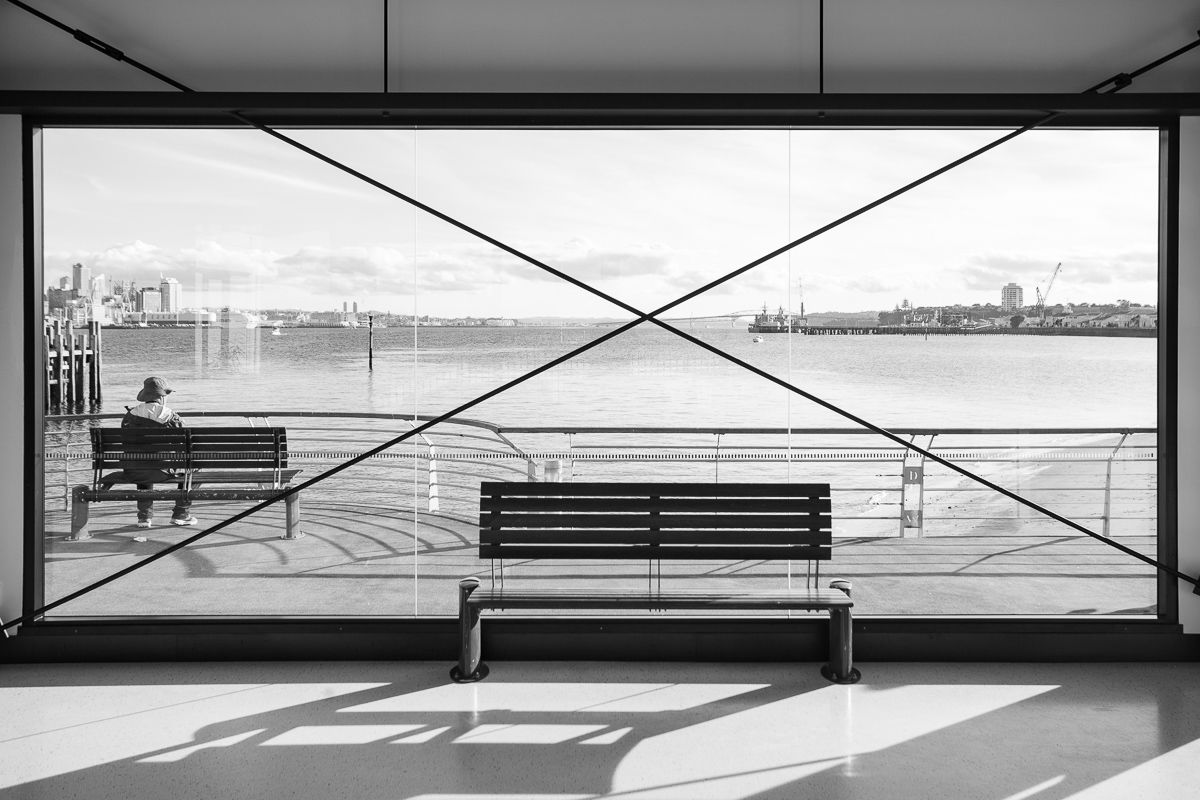
Reflections are everywhere in urban environments, making them a useful tool for street photographers. Windows, puddles, and other reflective surfaces can add visual interest and depth to your photos. To capture the best reflections, pay attention to every element in the scene and experiment with different angles.
Be mindful of your own reflection when shooting. You can include yourself for an interesting self-portrait or adjust your position to remove yourself from the frame. Waiting for the right person to walk by can also add a compelling subject to your reflection photos.
Post-processing is key for making reflection photos pop. Increasing contrast, highlights, and clarity can offset the flat look of reflections. Converting to black and white can also create striking, moody images.
For more tips on capturing reflections in street photography, check out this in-depth guide.
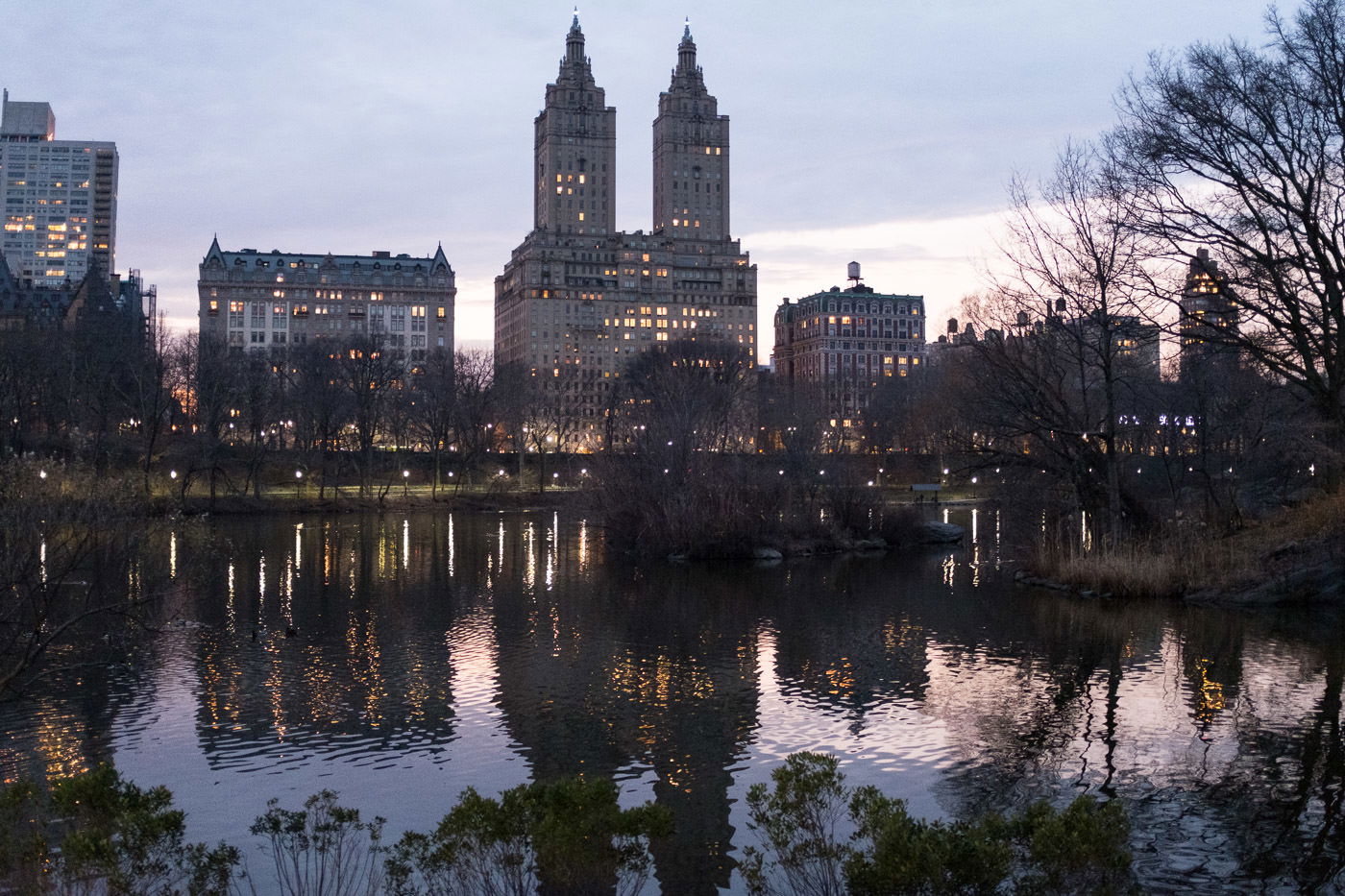
Fine art street photography combines traditional art elements, photography techniques, and street narratives to create high-quality, artistic images. To capture stunning fine art street photos, slow down and take your time. Wait for the perfect light during the golden hours, and use a tripod if possible.
Be picky and only accept your very best images. Engage all your senses to understand the environment and the story you want to tell. Pay attention to smell and sound to help you compose the scene and choose colors and tones.
Experiment with both color and black-and-white photography to find what works best for each image. Remember that street photography doesn’t have to be limited to urban scenes. Your interpretation is defined by the communities you’re familiar with. When you have the perfect photo, use post-production techniques to give your photography a unique style.
Learn more about fine art street photography in this full-length article.
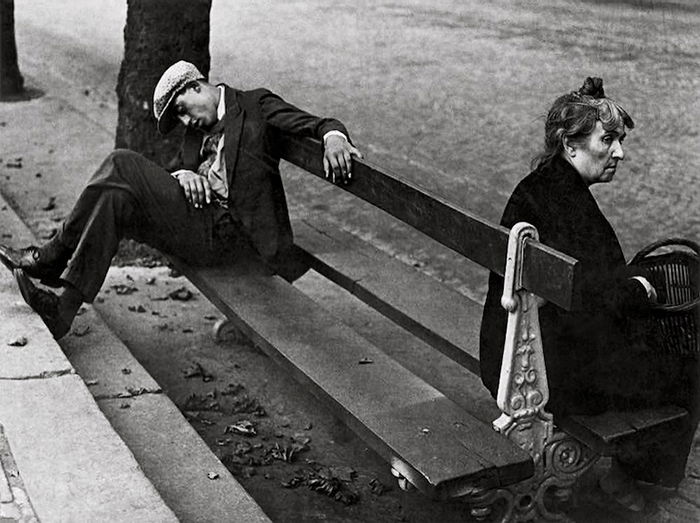
Candid street photography is all about capturing authentic moments. Get close to your subjects to capture emotions and vulnerability. Body language can tell strong stories, so look for hunched shoulders, people holding hands, or interesting head angles.
Patience is key in candid street photography. Wait for the right moment to catch intriguing interactions, facial expressions, or beautiful movements. Slow down and observe the changing lights and the flow of traffic.
Know your rights as a street photographer and research the laws in every country. Dress down, blend in, and keep a low profile. Be prepared to show people their photos if they ask.
Check out our in-depth article on candid street photography here.

Urban photography captures the essence of everyday life in cities. It encompasses a wide range of subjects, from architecture and landscapes to portraits and street scenes. To get started, find inspiration from other urban photographers and decide what you want to focus on.
Choose a camera and lens that suit your style. Smaller, lightweight cameras are ideal for candid street photography, while wide-angle lenses work well for cityscapes. Adjust your camera settings using modes like Program or Shutter Priority to quickly adapt to different situations.
Look for interesting details, patterns, and textures in the urban environment. Capture images of people to add interest and tell a story. Waiting in one spot for subjects to enter your frame can lead to more natural, candid portraits. Whether you shoot in color or black and white, urban photography offers endless opportunities to explore and document the world around you.
Dive deeper into urban photography with our comprehensive guide.
Taking the pictures is just one step in the street photography process. For many modern photographers, editing is almost as important as using your camera.
Photo editing software like Adobe Lightroom and Luminar Neo are both popular choices with street shooters. Lightroom’s wide and sophisticated toolset gives you incredible creative control, allowing you to produce a unique aesthetic that matches your photography style.
Lightroom presets are a quick and easy way to edit your photos. You can create your own presets for a streamlined workflow. And you can find presets from famous photographer, which is great if their style inspires your work.
Editing street photography in Lightroom can take your photos to the next level. Start by adjusting the white balance to get the right color tones. Then, work on the exposure and contrast to bring out the details in your image.
Use the Highlights, Shadows, Whites, and Blacks sliders to add contrast and volume to your photo. Other sliders, like Clarity, Vibrance, and Saturation, can help you achieve a sharp, vivid look. The Tone Curve tool is essential for fine-tuning the tones in your image.
In the HSL panel, adjust the Hue, Saturation, and Luminance of specific colors to make certain elements pop. Split toning allows you to color-correct the highlights and shadows separately. Finally, add some sharpening, vignetting, and grain for a polished, urban look.
Our full guide on editing street photography is the best place to start if you want to learn more.
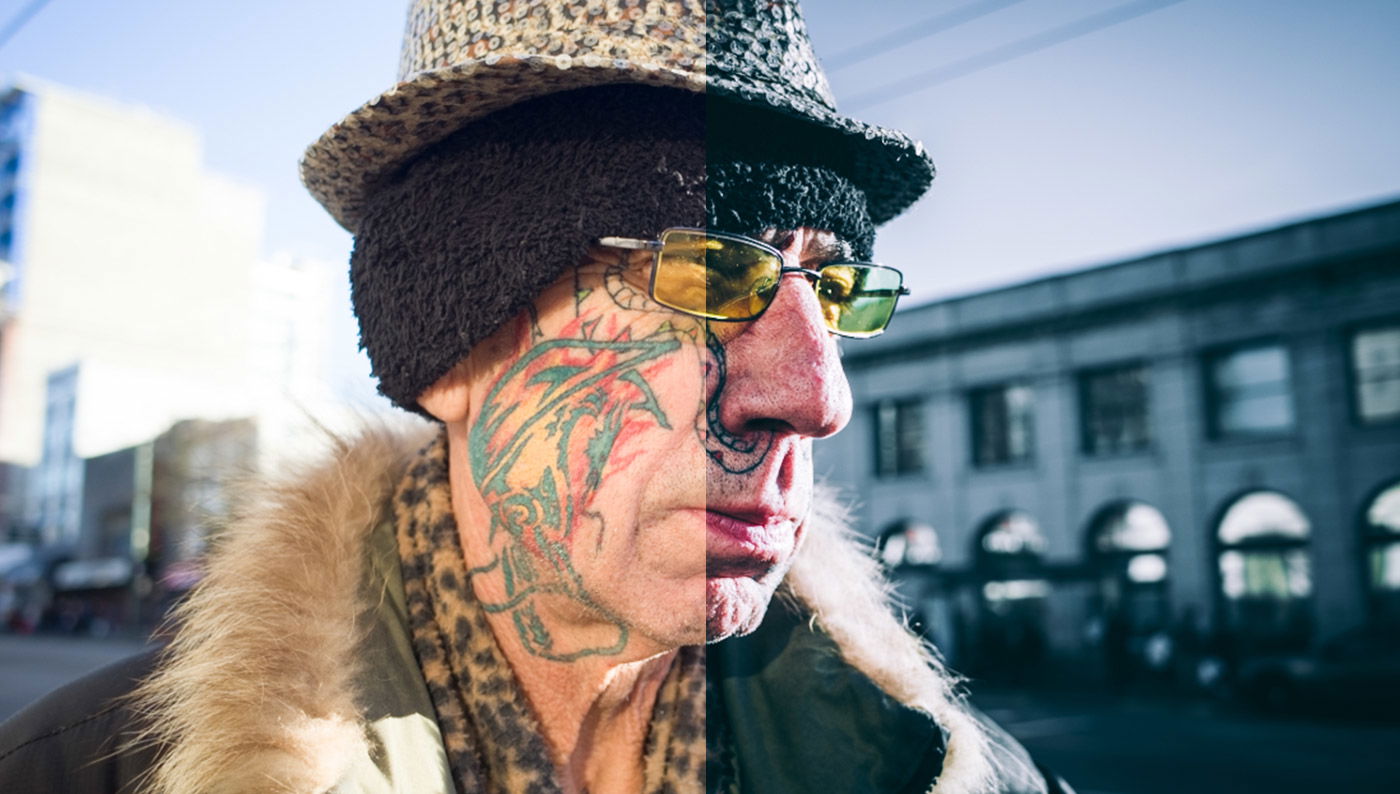
Lightroom presets are a quick way to achieve a specific look or style in your street photos. Think of them as photo editing recipes that combine settings like tone curves and color grading. When you apply a preset, Lightroom sliders change automatically to create the desired effect.
Using Lightroom presets speeds up your workflow so you can spend more time capturing great shots. Presets are also a great way to learn how various sliders interact to create different looks. Lightroom includes over 150 presets grouped by look or photography type.
Find more information on street photography Lightroom presets in our in-depth guide.
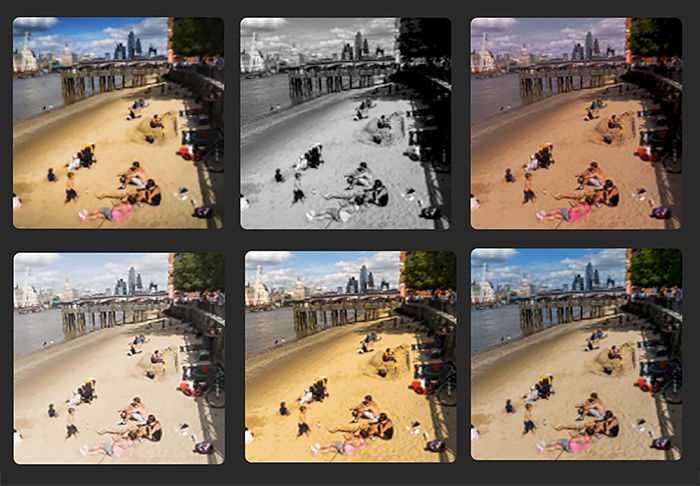
Street photographers need to know the laws when taking photos in public. You might assume that you’re free to take pictures in public places all over the world, but that’s not always the case. Many countries, especially in Europe, have relaxed rules about street photography, but other countries have strict laws you don’t want to break.
Street photography also raises some ethical questions, like who and what you should or should not take pictures of. We look at both laws and ethics in the following sections.
Street photography is a popular genre, but it’s important to know the laws around taking photos of people in public. In the United States, the First Amendment protects freedom of expression, including photography, in public spaces. This means photographers can take pictures of people and buildings as long as they are in a public area.
However, there are some restrictions to keep in mind. Crime scenes and certain government facilities like military bases are off limits. Photographers also can’t disrupt traffic, block footpaths, or create safety hazards.
It’s important to note that people in public spaces don’t have a right to privacy. If someone doesn’t want their picture taken, the photographer is not legally obligated to comply with their wishes. However, photographers should still be respectful and avoid harassing or provoking others.
The laws around photography in public places vary from country to country, so always check before you travel somewhere new,
If you’d like to learn more about public photography laws, this article is the best starting point.
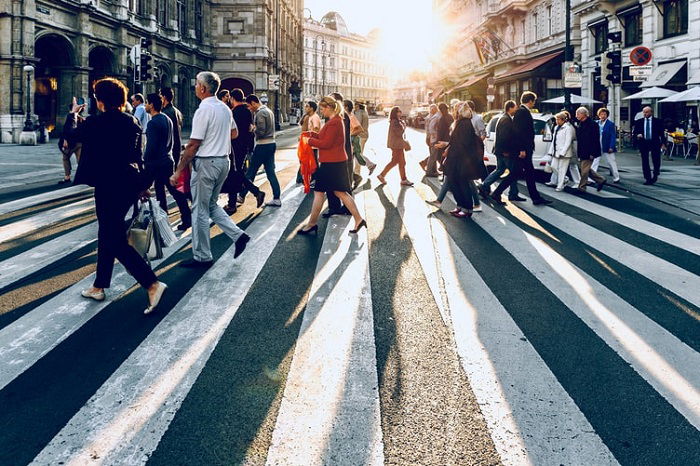
Street photography ethics is something all street shooters should think about. The key is to find a balance between the photographer’s right to freedom of expression and the subject’s right to privacy.
If you’re unsure, ask permission before taking someone’s photo. A smile can also help signal your good intentions. If someone catches you taking their picture, respond with a genuine smile, and they’ll likely smile back.
If a subject asks you to delete their photo, do it. No photograph is worth a confrontation. When photographing those experiencing hardship, like the homeless, consider asking permission or finding a way to give back. Photography ethics discussions are fascinating and worth exploring further.
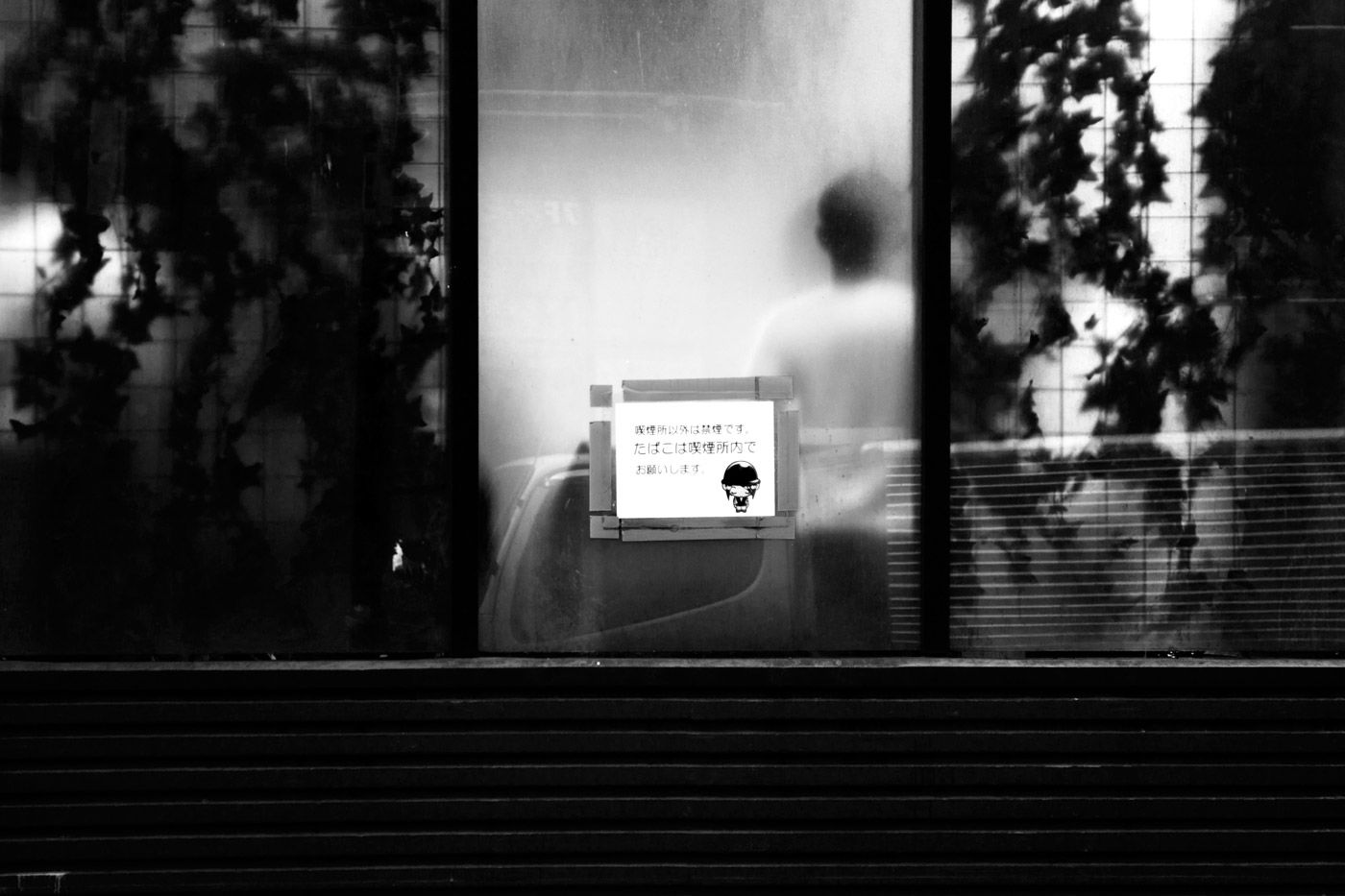
The best street photography cameras are compact and lightweight. They have a good mix of auto and manual settings. And they deliver high-quality photos and videos.
The Fujifilm X100V is a top choice for street photographers. It has a stylish rangefinder design and a powerful 26 MP sensor. The fast, fixed f/2 lens works well in all lighting conditions.
Other great options include the Olympus OM System OM-5 and the Nikon Z f. The OM-5 is a compact Micro Four Thirds camera packed with creative features. The Z f has a beautiful retro design and impressive full-frame performance.
If you want to learn more about the best street photography cameras, we have an in-depth guide covering the best models.
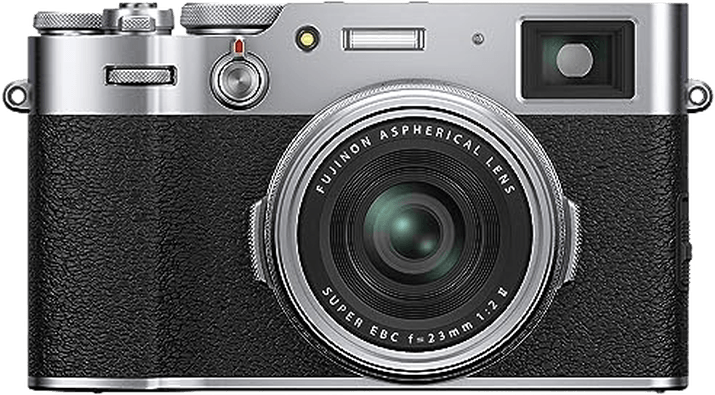
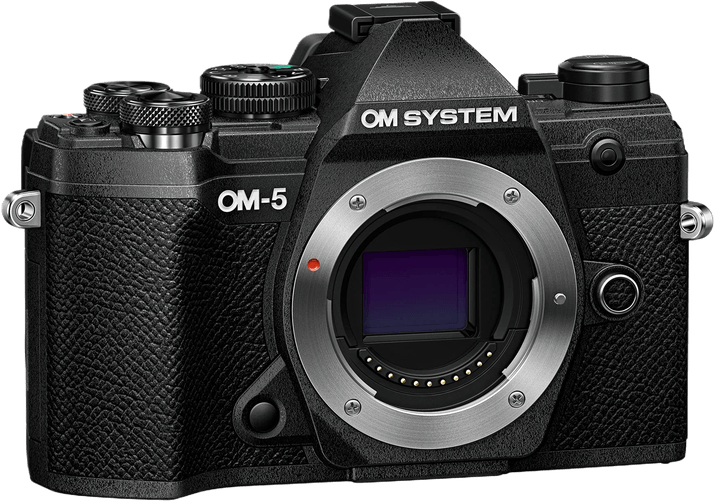
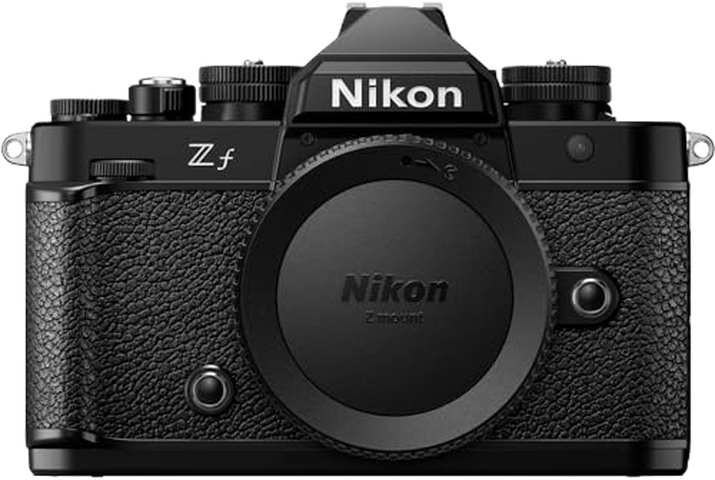
The Fujifilm X100V is a stylish compact camera that’s great for street photography. It has a 26.1 MP APS-C sensor and a redesigned 23mm f/2 lens that delivers sharp images with minimal distortion.
The X100V’s autofocus is quick and accurate, with face detection and tracking capabilities. It also has an 11 fps burst rate, making it easy to capture candid moments on the street.
Other notable features include 4K video recording, a tilting LCD touchscreen, and weather sealing. If you want to learn more about the Fujifilm X100V, check out our detailed review.
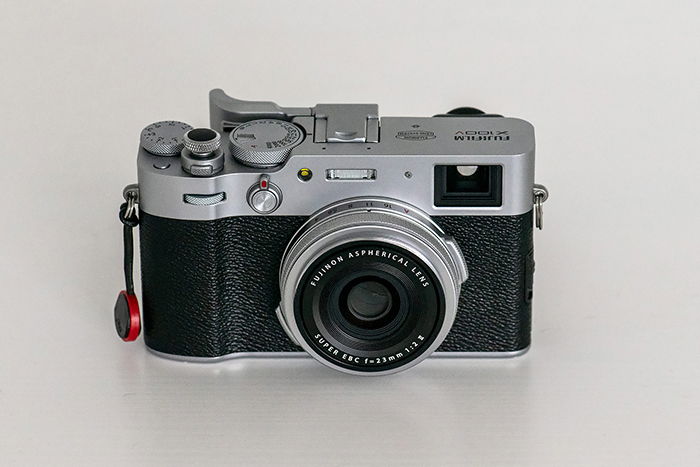
The Leica M10 is a high-end digital rangefinder camera that combines classic design with modern features. It has a 24-megapixel full-frame sensor that delivers excellent image quality, even in low light. The camera’s manual controls and simple menu system make it easy to use.
The M10’s compact body is built to last, with weather sealing to protect against the elements. It has a bright optical viewfinder for composing shots and a responsive autofocus system. The camera also offers a burst mode for capturing fast action.
Leica lenses are renowned for their sharpness and clarity, and the M10 is compatible with a wide range of them. Whether you’re shooting landscapes, portraits, or street scenes, the Leica M10 is a versatile camera.
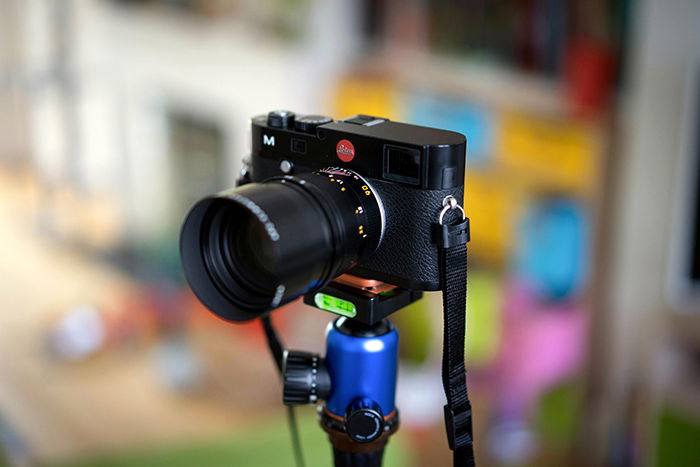
When choosing the best lens for street photography, consider factors like focal length, aperture, size, and price. A 50mm prime lens is a popular choice because it offers a natural perspective similar to what the human eye sees. It also performs well in low light thanks to its wide maximum aperture, which is usually around f/1.8.
The Canon EF 50mm f/1.8 STM is a great option. It’s affordable, compact, and delivers sharp images with beautiful background blur. If you prefer a wider view, a 35mm lens is another good choice for street photography.
Zoom lenses can also work well, offering more flexibility in framing your shots. However, they are often larger and may not have as wide of a maximum aperture as prime lenses. Ultimately, the best lens for you depends on your specific needs and preferences.
To learn more about choosing the right lens for street photography, check out our in-depth guide.
The best Canon lenses for street photography help you capture the essence of urban life. Our guide offers insights into a variety of lenses, from sharp primes to versatile zooms.
The Canon RF 50mm f/1.8 STM is our top mirrorless lens pick for its natural perspective and low-light performance. For DSLR users, the Canon EF 50mm f/1.8 STM stands out with its lightweight design and quick focus. Both lenses are exceptional for street photography.
Other great options include wide-angle lenses like the Canon RF 28mm f/2.8 STM and Canon EF 24mm f/1.4L II USM for capturing expansive cityscapes. Zoom lenses such as the Canon RF 24-70mm f/2.8L IS USM and Canon EF 24-70mm f/4L IS USM provide flexibility in framing your shots.
To learn more about the best Canon lenses for street photography, check out our in-depth guide.
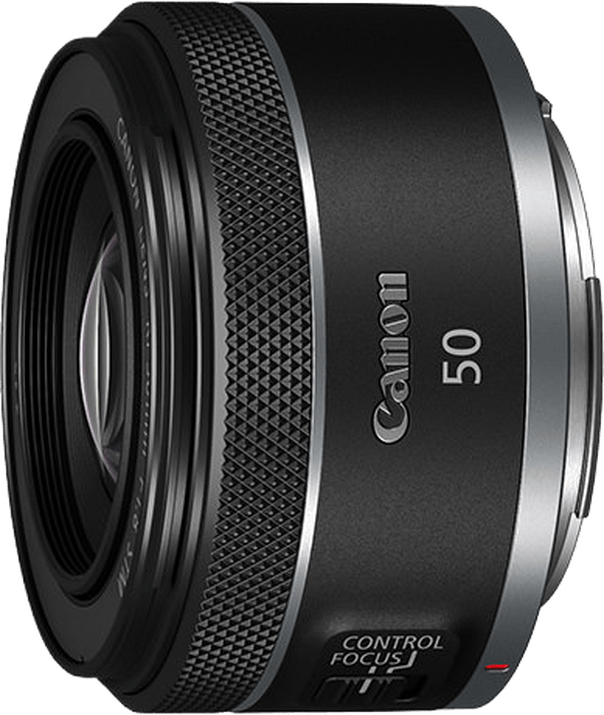
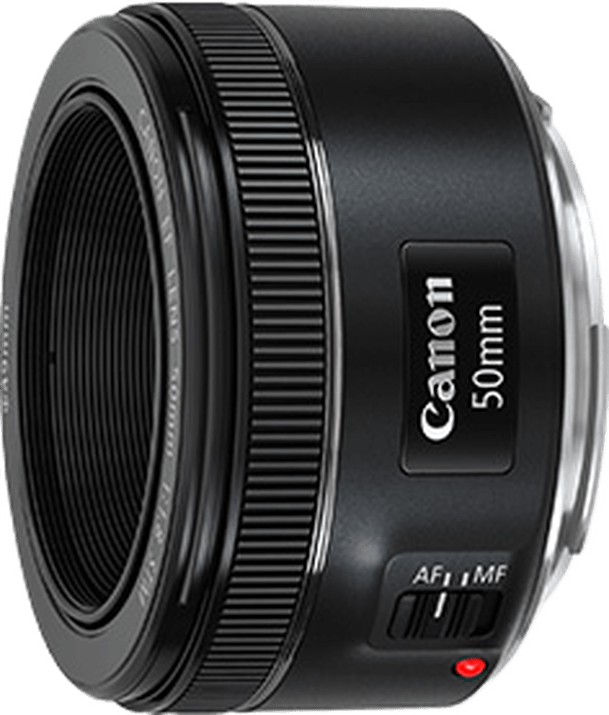
The Nikon Z 50mm f/1.8 S and Nikon AF-S 50mm f/1.8 G are the best Nikon lenses for street photography. They have the perfect focal length for capturing life’s candid moments. And their f/1.8 aperture is great for low-light shooting and creating a shallow depth of field.
The Nikon Z 50mm f/1.8 S is sharp, quick to focus, and has a custom control ring. The Nikon AF-S 50mm f/1.8G is lightweight, compact, and delivers excellent image quality.
Whether you shoot with a mirrorless Nikon or DSLR, there are many other great lenses for street photography. Zoom lenses like the Nikon Z 24-70mm f/4 S and Sigma 24-70mm f/2.8 DG OS HSM offer versatility. And wide-angle primes like the Nikon Z 35mm f/1.8 S and Nikon AF-S 35mm f/1.8G ED provide a wider view.
To learn more about the best Nikon lenses for street photography, check out the full list in this article.
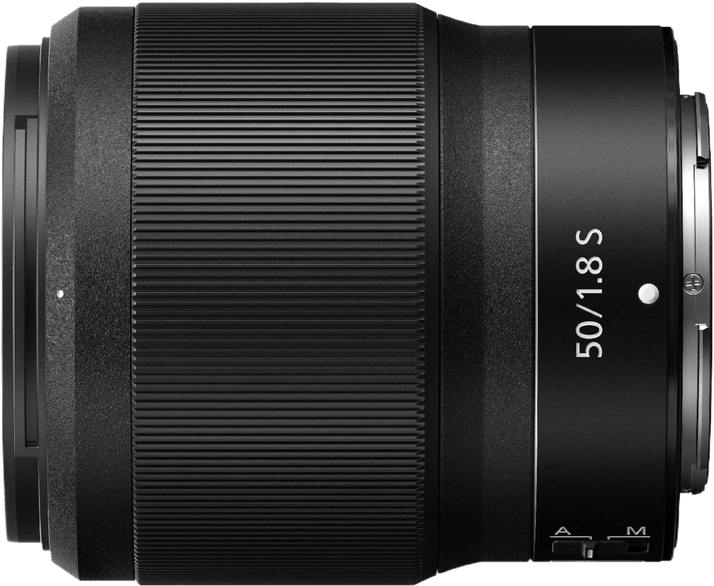
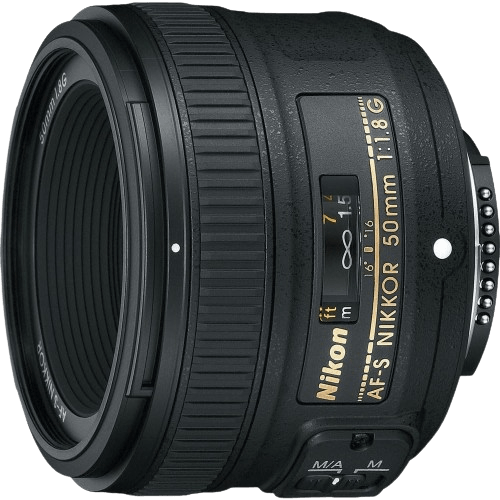
The best Sony lenses for street photography help you capture the essence of urban life. Our top pick is the Sony E 16-55mm f/2.8 G. This versatile zoom has a wide aperture and quick autofocus, perfect for the fast pace of the street.
The Sony E 18-105mm f/4 G OSS PZ is another great option. Its wide zoom range lets you shoot everything from cityscapes to portraits, and the constant f/4 aperture gives you consistent low-light performance.
For a compact prime, the Sony E 35mm f/1.8 OSS is hard to beat. The f/1.8 aperture is great in low light. And the focal length is perfect for street photography. If you want to learn more about Sony lenses for street photography, we have a detailed guide that covers the best options.
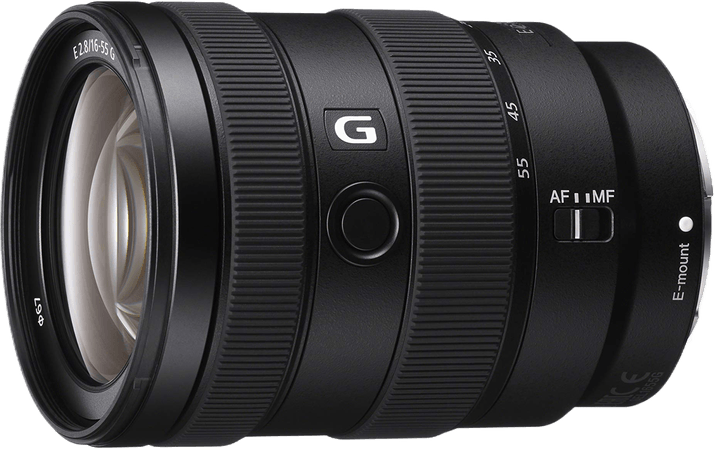
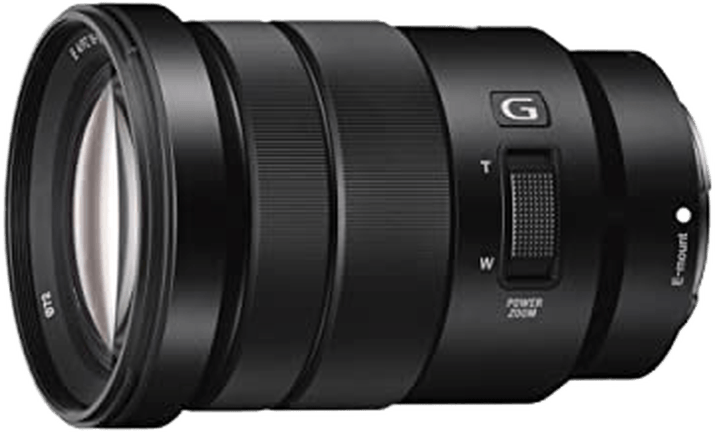
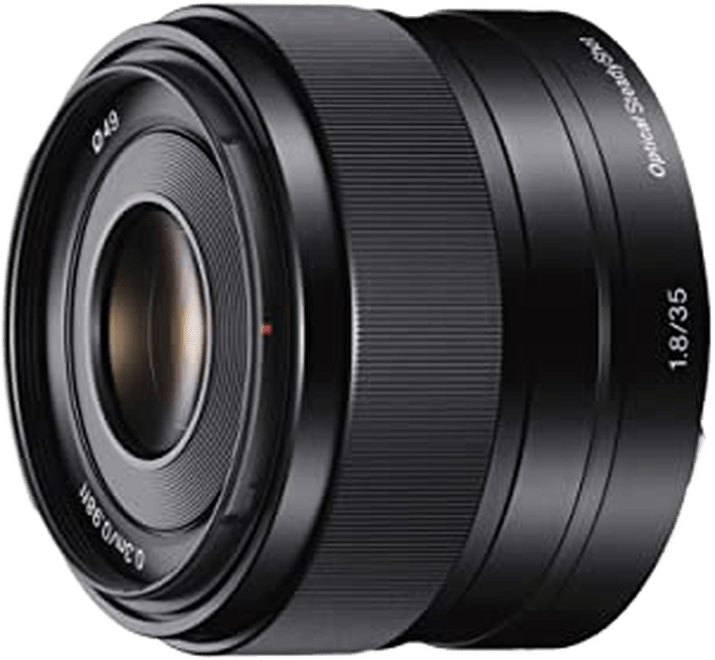
A nifty fifty lens is a 50mm prime lens with a fast f/1.8 aperture. It captures a perspective similar to the human eye, with minimal distortion and a natural field of view.
Nifty fifty lenses are versatile. They’re great for portraits, landscapes, and street photos. The fast aperture gives you a shallow depth of field, creating beautiful bokeh effects. These lenses are also small, lightweight, and affordable.
Using a 50mm prime lens helps train your photographic eye. Since there’s no zoom, you must move to compose your shots. This gets you thinking more about framing, distance, and what makes a good image.
A nifty fifty lens is an essential piece of kit for any photographer. It’s the perfect first prime lens, offering top image quality and creative possibilities at a budget-friendly price.
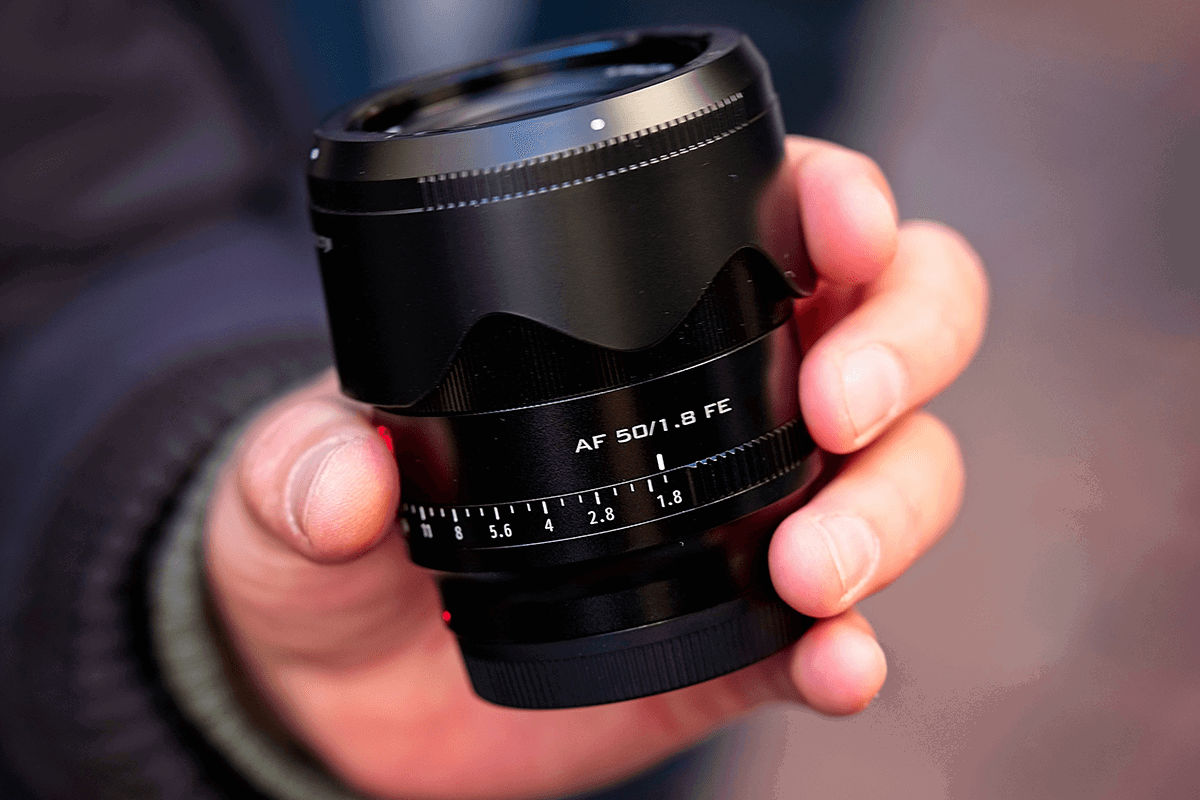
When choosing between a 35mm and 50mm prime lens, consider your photography style and needs. The 35mm lens provides a wider field of view, making it great for landscapes, interiors, and capturing candid moments. It allows you to get closer to your subject while still fitting more into the frame.
On the other hand, the 50mm lens is more versatile and produces images closer to what the human eye sees. It offers a shallower depth of field and better bokeh, making it ideal for portraits and low-light situations. The 50mm is a perfect choice if you can only bring one lens with you.
Ultimately, both lenses have their pros and cons, and the choice depends on your specific requirements. To dive deeper into the comparison of 35mm vs 50mm prime lenses, including their features and best options for different sensor sizes, click the link to see the full article.
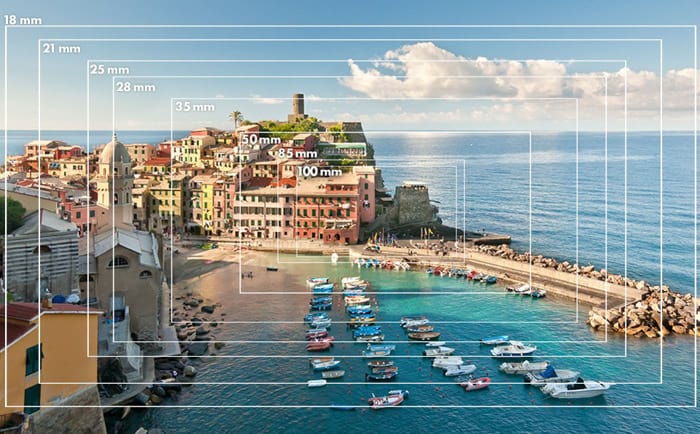
Pancake lenses are compact, lightweight, and affordable. They have wide or standard focal lengths from 14mm to 50mm. This makes them great for street, travel, and landscape photography.
The Canon EF-S 24mm f/2.8 STM is a top pancake lens. It has sharp optics and a fast f/2.8 aperture. The 24mm focal length is perfect for street photography and architecture.
Pancake lenses are a must-have accessory. They take up little space in your camera bag. And they’re cheaper than other lens types. If you want to learn more about pancake lenses, we have a full list of the best ones from all the top lens brands.
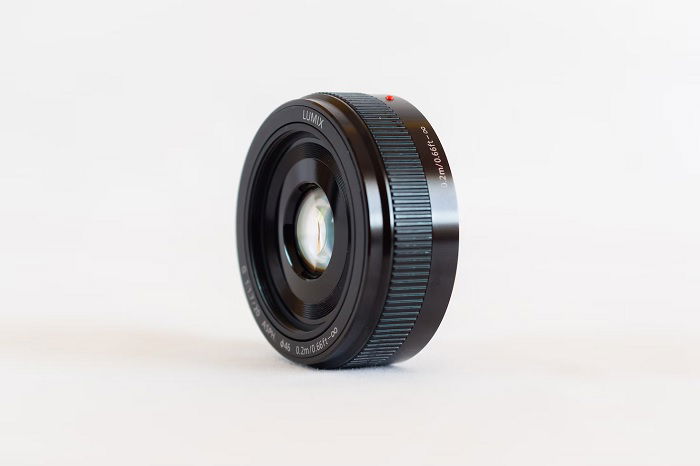
The Wandrd Prvke backpack is the top choice. Its practical design is great for adventurous travelers. The bag is very durable and comes in different sizes.
The Manfrotto PRO Light Multiloader is the most versatile backpack. It has a sturdy build and lots of space for camera gear. The bag is comfortable to wear and can be adjusted in many ways.
The Wandrd Duo Daypack is the best day backpack. It protects your gear from bad weather and has helpful features. The backpack is well-made, has plenty of storage, and looks good too. It’s a bit pricey but worth the cost.
To learn more about the best camera backpack, check out our extensive review.
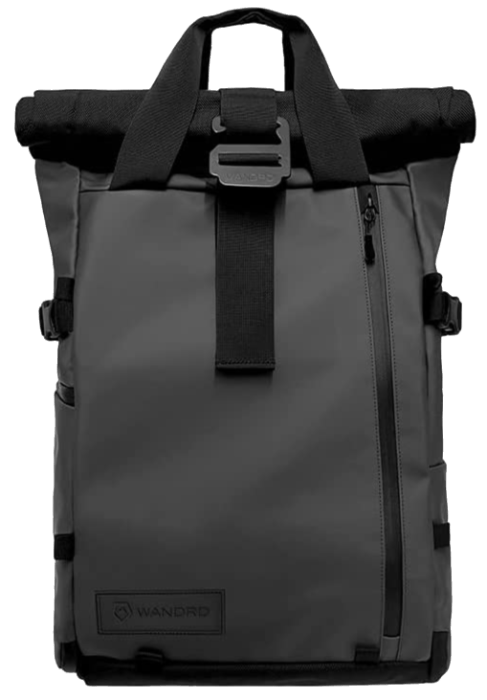
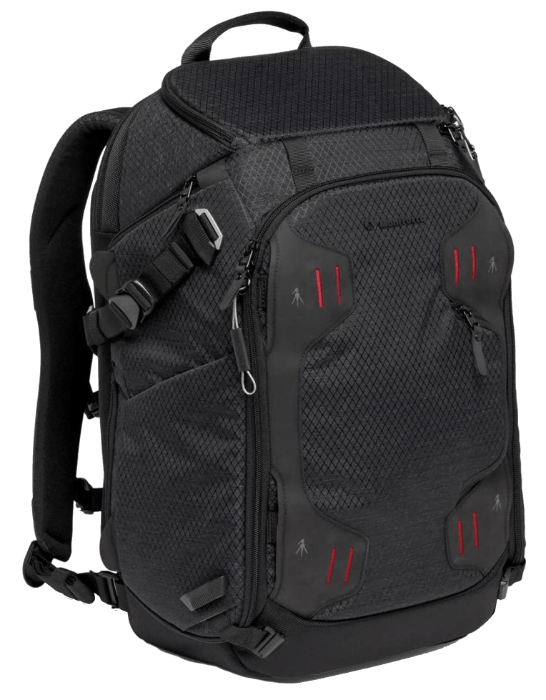
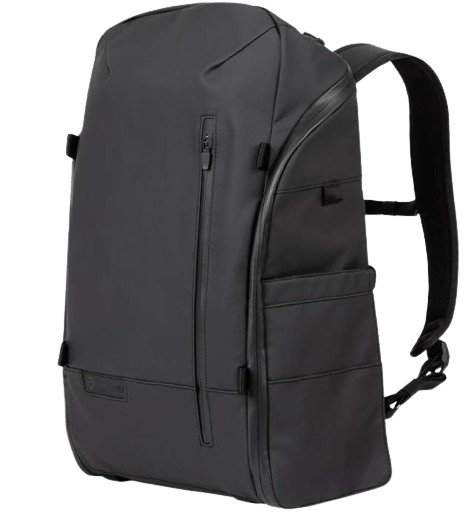
The Wandrd Duo Daypack is a high-quality camera backpack that’s compact and lightweight. It’s made from strong, weather-resistant materials that keep your gear dry in the worst conditions.
This bag has many pockets for organizing your equipment. The main camera compartment can hold a full-frame DSLR with a lens attached. Extra lenses and small cameras fit in the padded pockets above.
The Duo Daypack is comfortable to wear thanks to the padded shoulder straps and back support. Accessing your camera is easy using the unique zipper system. If you want to learn more about the Wandrd Duo Daypack, check out our detailed review.
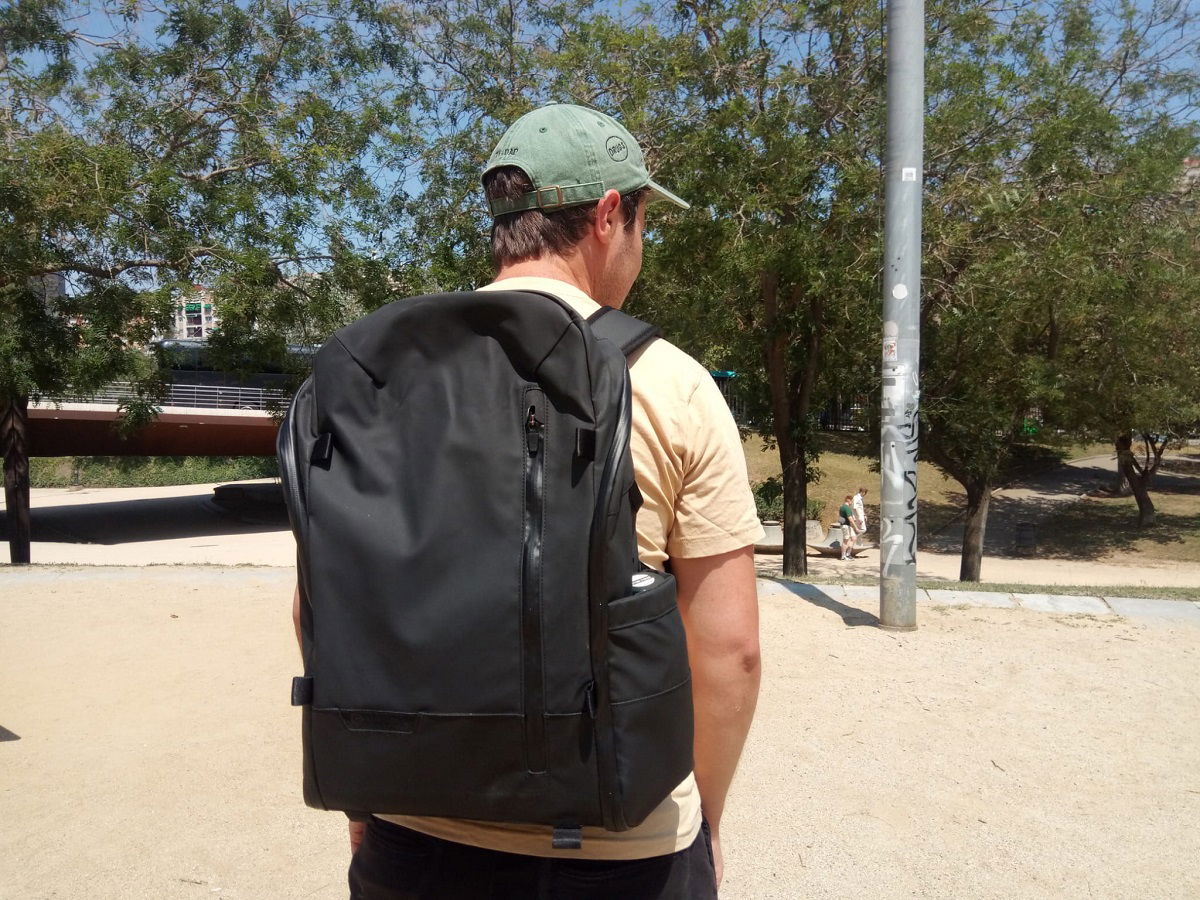
The Lowepro Fastpack Pro BP 250 AW III is a camera backpack built for speed and convenience. Its lightweight nylon material and quick-access design make it perfect for photojournalists and wedding photographers who need to act fast.
The bag’s minimal yet strategic padding ensures comfort without sacrificing security and space. The ingenious QuickDoor access combines the best of side and full compartment access, letting you grab your camera quickly or view all your gear at once.
Despite its comprehensive features, the Fastpack Pro remains lightweight and easy to carry, making it an ideal everyday backpack for photographers on the go. To learn more about the Lowepro Fastpack Pro BP 250 AW III, read our in-depth review covering its strengths, weaknesses, and key features.
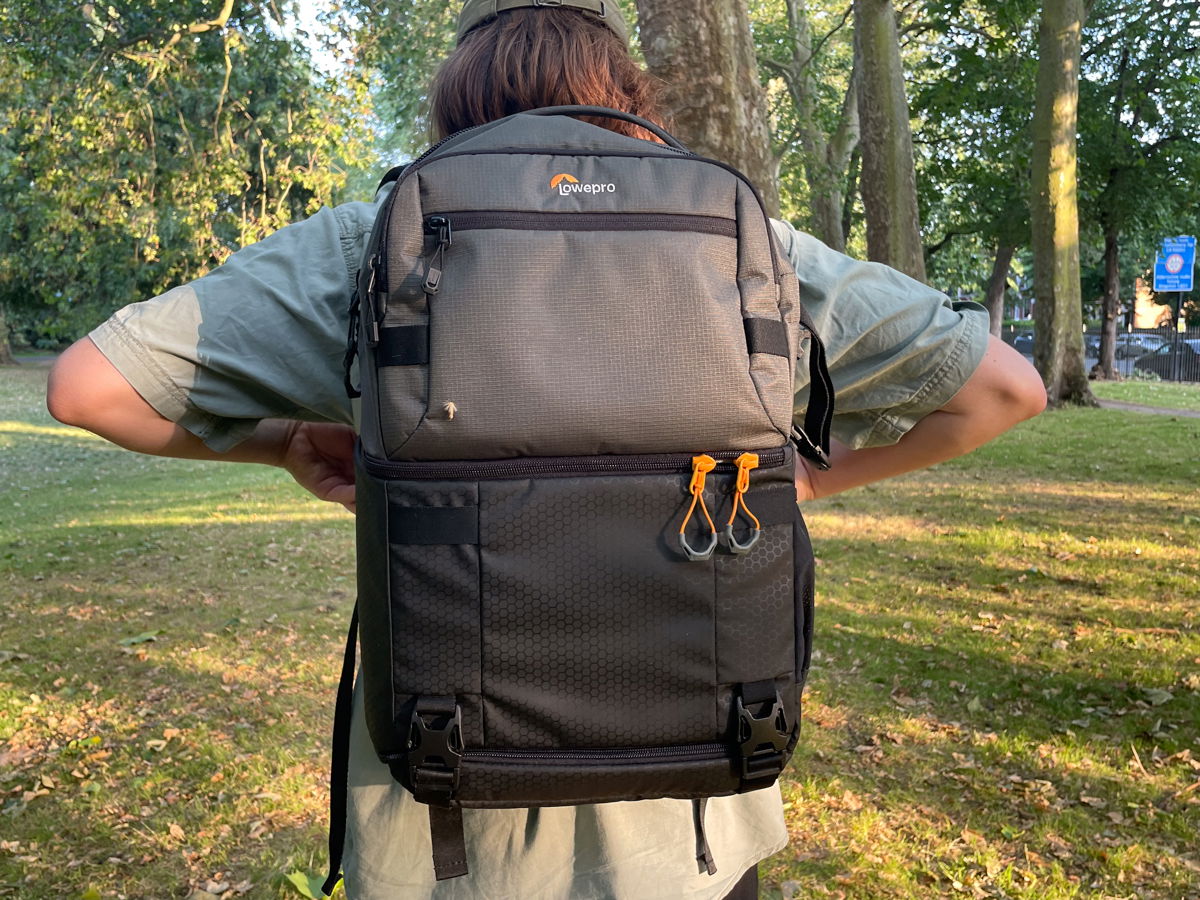
A camera messenger bag is a great choice for photographers who want a stylish and practical way to carry their gear. The best camera messenger bags offer plenty of space for your camera, lenses, and accessories while keeping everything protected.
Look for a bag with a spacious, well-padded interior and customizable dividers to keep your equipment organized. A durable, water-resistant exterior is also important to protect your gear from the elements.
Comfort is key when choosing a camera messenger bag. An adjustable, padded shoulder strap and lightweight design will make it easy to carry your bag for long periods. If you want to learn more about finding the perfect camera messenger bag, check out our full-length article.
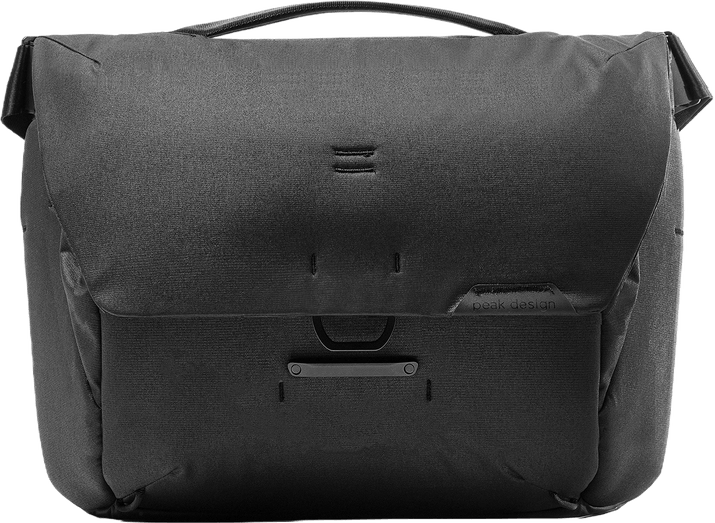
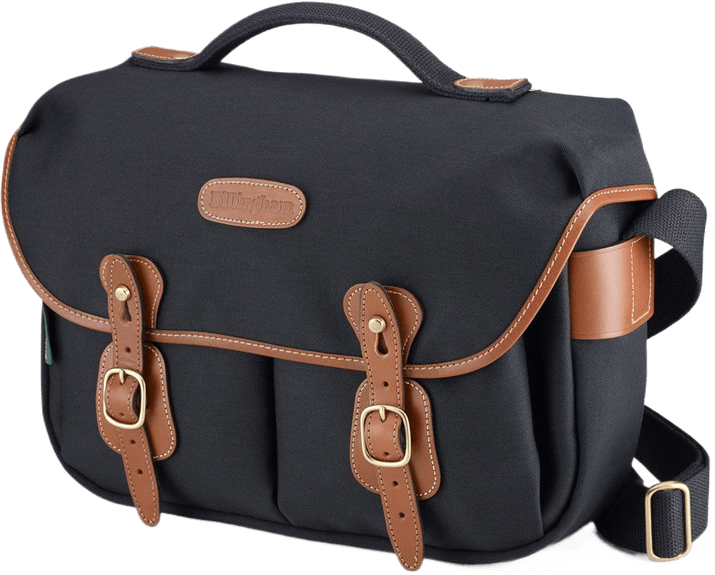
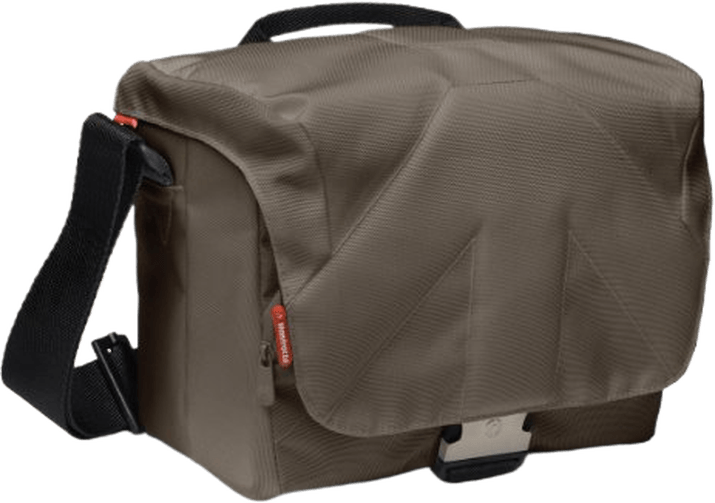
The best street photography gear helps you capture incredible shots without weighing you down. A quality camera backpack is a must-have, and the Wandrd Duo Daypack, as we have already mentioned, is an excellent choice.
For keeping your camera secure in your hand, the Peak Design CL-3 Clutch Camera Handstrap is a top pick. It’s comfortable, reliable, and works with most cameras. The K&F Concept Lightweight Travel Tripod is another useful accessory, giving you more options with exposure settings and low-light shooting.
Other important items include a memory card case to keep your SD cards safe and a card reader for quick data transfer. The Anker Portable Charger is also handy, letting you recharge your camera on the go. With the right street photography gear, you’ll be ready to hit the streets and capture amazing shots.
Looking at the work of the best street photographers is a great way to find inspiration. The idea isn’t to copy the work of other photographers. It’s to see how another photographer operates so you can see a different perspective.
We have several lists looking at some of the best street photographers working right now. You can also find articles that look at photojournalists and street fashion photographers. We finish with some of the best photography quotes from famous street photographers.
Street photography captures the beauty of everyday life. The masters of street photography have a special way of seeing the world. Looking back at their work can help you improve your own street photography skills.
Some of the most famous street photographers worked in the mid-to-late 20th century. Dorothea Lange photographed poor rural farmers and the unemployed during the Great Depression. Her goal was to shine a light on social injustice. Helen Levitt captured a poetic view of New York City, showing the warmth and sense of community in urban life.
Many street photographers are known for their unique styles. Daido Moriyama’s high-contrast, grainy images highlight the conflict between traditional Japanese culture and the modern world.
Diane Arbus focused on people living on the fringes of society, creating intense and sometimes disturbing portraits. Saul Leiter was an early pioneer of color street photography, capturing quiet city moments with an impressionistic quality.
To learn more about these and other famous street photographers, their stories, and their work, click the link.
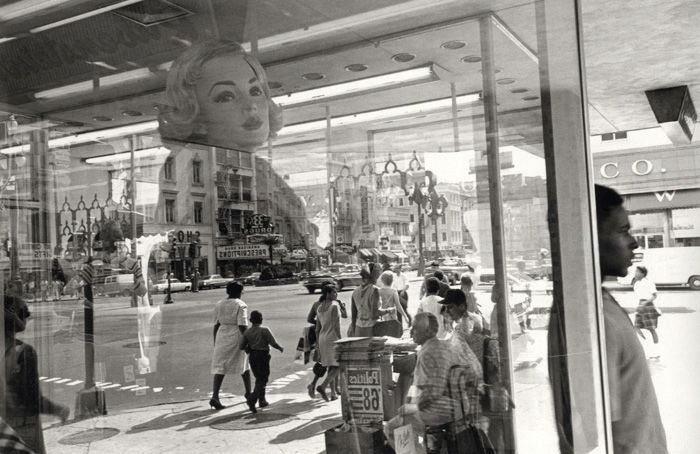
Street photography captures moments that everyone can see, but only a few really notice. The best street photographers freeze scenes that happen in a split second at places we all know. They are always aware of their surroundings, and their eyes are trained to see the unusual in the usual.
Street photography doesn’t necessarily have to include people. Playing with colors, shadows, lights, buildings, and different objects can also make great street photographs. Sometimes, street photography requires interaction with the subjects, like communicating with someone they photographed.
If you’re looking for contemporary street photographers to follow for inspiration, this list of influential artists working in the genre today is a great place to start. From candid shots of everyday life to unique compositions and visual storytelling, these photographers showcase the diversity and creativity of street photography.
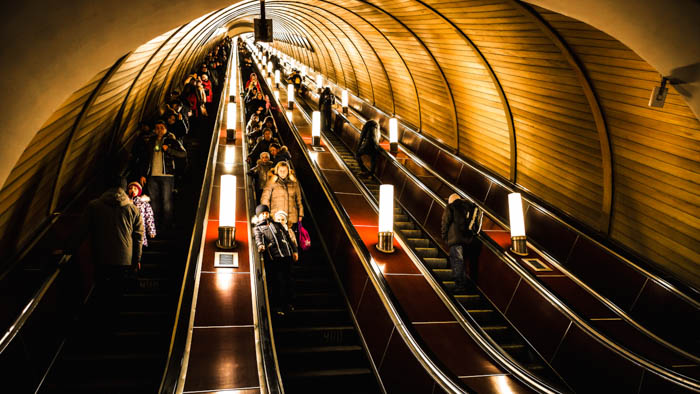
Photojournalists capture important events and tell powerful stories through their images. Some of the most famous photojournalists working today include Anastasia Taylor-Lind, who photographs issues related to population, women, and war.
Gabriele Galimberti is another top photojournalist known for his long-term projects featuring people and their prized possessions. And Rena Effendi is worth noting for her work that focuses on notable women and wildlife conservation.
Other well-known photojournalists include Stuart Palley, who documents wildfires across the US; Krisanne Johnson, known for her candid black-and-white images; and Marcus Yam, a Pulitzer Prize winner who left his career as an aerospace engineer to pursue photography.
These photojournalists have been featured in publications like National Geographic, TIME, and The New York Times. Read our full article to learn more about famous photojournalists.
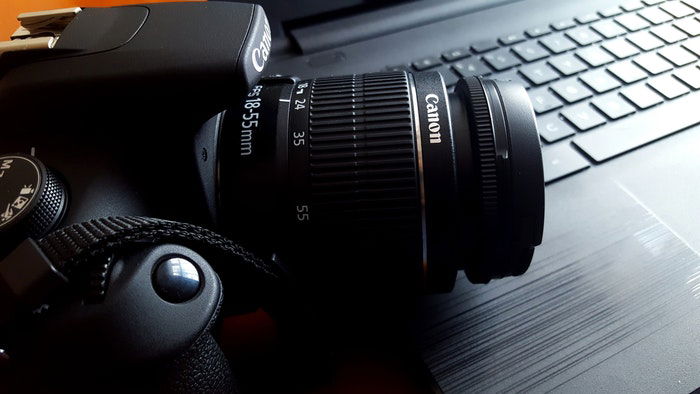
Street fashion photographers capture the latest trends on the streets. They’re always on the lookout for the next big thing in fashion. Here are ten of the coolest street fashion photographers to follow in 2024.
These photographers have a unique style that sets them apart. Some focus on high-end fashion, while others capture more urban streetwear. They shoot in major cities around the world, documenting the diverse fashion scene.
Many of these photographers have worked with big fashion publications and brands. Their work has been featured in magazines like Vogue and GQ.
To see more of their stunning street fashion photography, check out the street fashion photographers featured in the complete article.
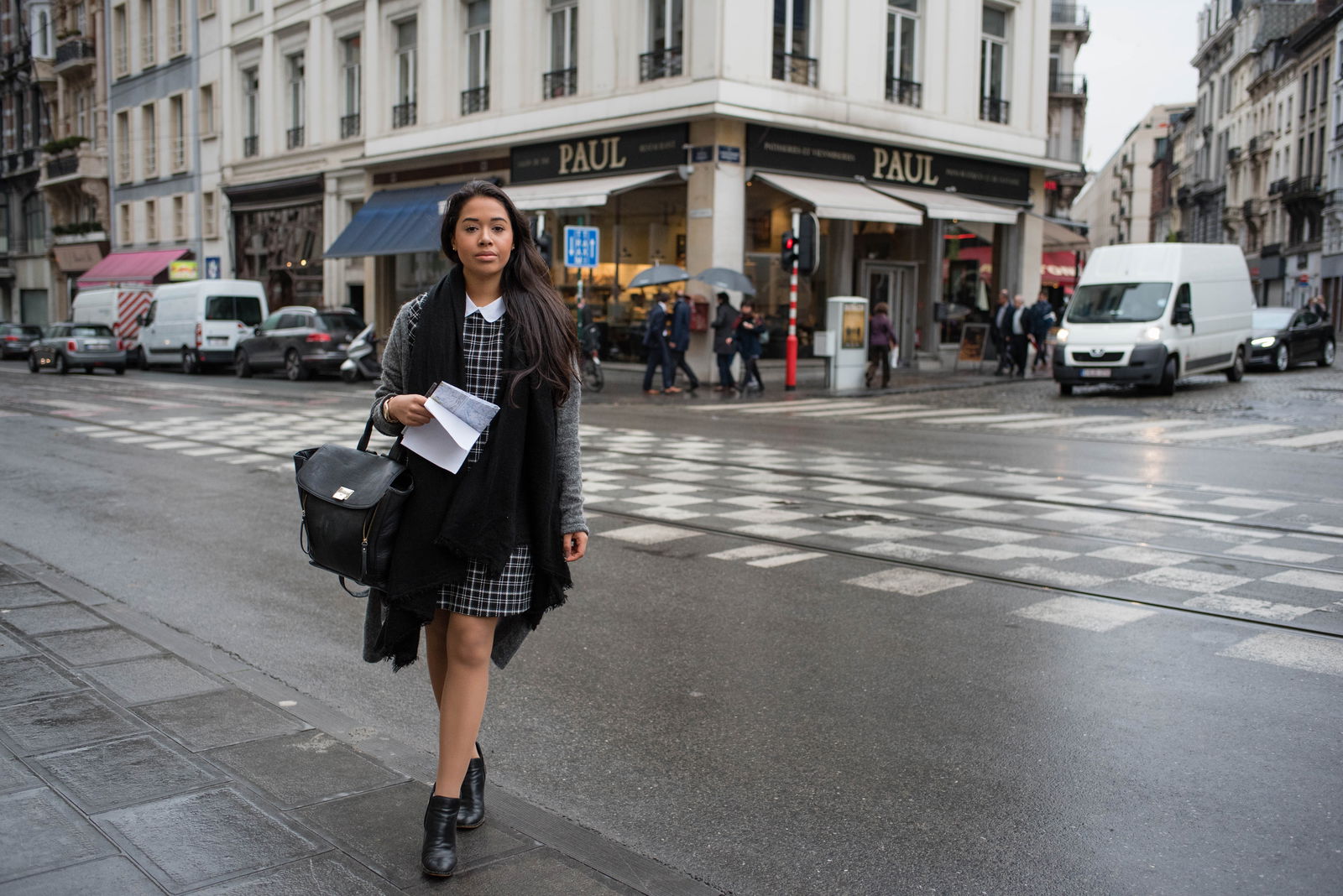
Street photography quotes offer insight into how and why photographers capture the streets. Some come from famous street photographers, while others resonate with personal ideas and thoughts.
Robert Doisneau said, “The marvels of daily life are exciting; no movie director can arrange the unexpected that you find in the street.”
Elliott Erwitt explains, “Street photography is about finding something interesting in an ordinary place. To me, photography is an art of observation. It’s about finding something interesting in an ordinary place… I’ve found it has little to do with the things you see and everything to do with the way you see them.”
Henri Cartier-Bresson spoke about the decisive moment: “There is a creative fraction of a second when you are taking a picture. Your eye must see a composition or an expression that life itself offers you, and you must know with intuition when to click the camera.”
Read more street photography quotes from famous photographers by clicking the link.
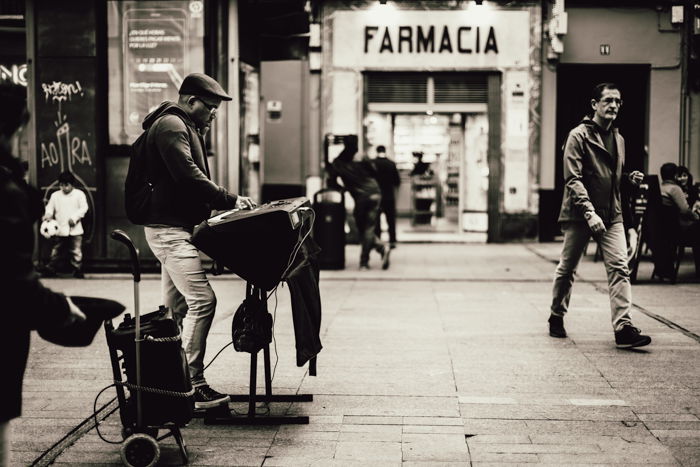
“
